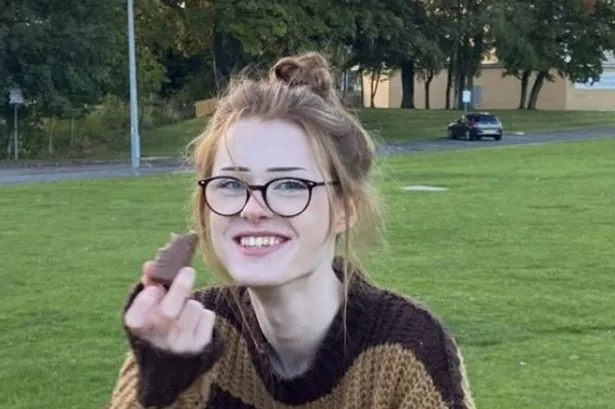Brianna Ghey's killers face justice tomorrow after being convicted of her brutal murder.
The 16-year-old was stabbed to death almost a year ago on Saturday, February 11 in Culcheth Linear Park, Warrington. The transgender teenager, from Warrington, was left to be discovered by members of the public after being stabbed 28 times in a “ferocious” attack.
Her murderers, known only as Girl X and Boy Y currently, will have their identities revealed on February, February 2 at Manchester Crown Court when they are sentenced for their crimes.
READ MORE: Join Brianna Ghey Murder Trial WhatsApp as Girl X and Boy Y sentenced
READ MORE: Boyfriend's gruesome attack uncovered after Virgin Media worker visited flat
The sentencing will mark the culmination of a court battle in which Girl X and Boy Y, both aged 15 at the time of the killing, desperately tried to blame each other.
Members of Brianna's family are expected to give statements in court on Friday, detailing the devastation and anguish they have experienced in the aftermath of her death. Mrs Justice Yip, the High Court judge who oversaw Girl X and Boy Y's trial, will hand down her sentence for the teenagers.
She previously warned the killers to expect life sentences, but said she had to determine the minimum term – the fixed period they must be detained for before being considered for release. Barristers on behalf of the prosecution and defence will seek to argue over the legal processes the judge uses to arrive at her final sentence.
Brianna's mum, Esther Ghey, spoke out ahead of the sentencing, she told ITV: "I don’t know whether justice will ever be done for Brianna. It would be nice to have her back home. That would be justice for me but obviously, that isn’t going to happen."
Brianna was stabbed 28 times in a park. Her bloodied body was found by dog walkers, who quickly called 999. The schoolgirl was invited out to Culcheth for the afternoon by Girl X, whom she regarded as a friend. Boy Y, a friend of Girl X, also came along. Little did Brianna know that she was walking into a trap.
The pair had planned the killing in advance, with Girl X even jotting down the plot on a piece of paper that was later seized from her bedroom. After the killers were arrested, a disturbing picture of an obsession with murder and torture emerged.
They discussed killing other children, before settling on Brianna as the target.
Esther continued: "Knowing that they are going to prison and they are going to have a long time, if not forever, is a massive relief because during the trial it was a rollercoaster of emotion as you always had that little seed of doubt that maybe the jury would come to the decision that they were not guilty.
"So hearing that guilty plea – it was just a massive sense of relief." During the trial, Girl X and Boy Y both tried to claim the other had killed Brianna.
Esther added: "The fact that they both pointed the finger at each other shows that they are cowards really and it shows the character of each of them. Maybe if they had admitted or shown a little remorse, I may have felt some sympathy for them.”
Why weren't Brianna’s killers named during the trial?
Girl X, from Warrington, and Boy Y, from Leigh, Wigan, weren’t able to be named previously in media reports for legal reasons.
The law says it is not permitted to report any details which could identify them in connection with youth court proceedings – hearings concerning people under 18. This includes their name, image, address, school or any other details which could lead to their identification.
This is under section 49 of the Children and Young Persons Act 1933. Breaching these rules is illegal.
Those automatic restrictions apply to any person under 18 'concerned' in criminal proceedings – a defendant, witness or victim – in the youth court. The law now extends to social media, so anybody publishing details which risk identification on Twitter, Facebook or other platforms, risks prosecution.
Courts can decide, under certain circumstances, to lift the restrictions, allowing the media to identify the defendant. In many serious cases, the media will often apply to have the restrictions lifted. It is up to the judge in the case to grant that request or not.
When a person under 18 appears as a defendant – or witness – in an adult court, they have no automatic right to anonymity. The court can however use its discretion to impose an order under section 45 of the Youth Justice and Criminal Evidence Act 1999 preventing identification of the defendant.
After Brianna’s murderers were identified online, Justice Yip said: “I am unable to conclude there is a good reason to maintain reporting restrictions following conviction and sentence. There is a strong public interest in full reporting on an exceptional case.”
Justice Yip added that a “balance can be struck” by lifting the order but imposing a “stay” on this. She added: “I direct that the order shall be lifted, allowing the reporting of the defendants’ identities. The effect will be stayed until the time of the sentencing hearing.”
Sign up for the ECHO’s LGBTQIA+ newsletter

